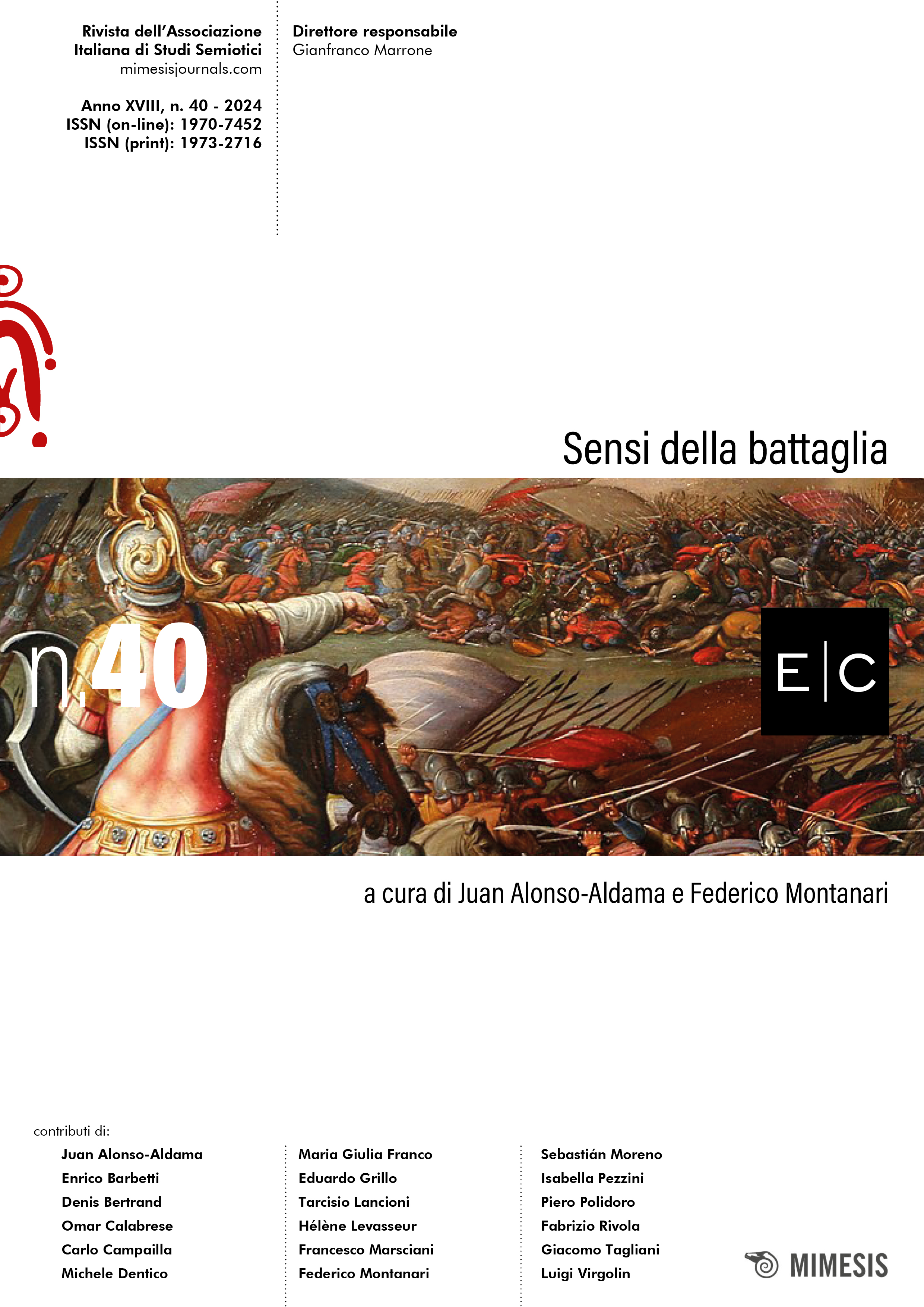L’épreuve du front : l’oeil et la chair
Abstract
Fabrizio, l’eroe de La Certosa di Parma di Stendhal, e Ferdinando, il narratore di Guerre di Louis-Ferdinand Céline, testimoniano la battaglia nell’immediata vicinanza del corpo: da un lato, l’occhio errante, dall’altro, la carne sofferente. Raccontano due versioni distinte del “Quid obscurum des batailles” di Victor Hugo ne I Miserabili, quell’“oscuro intervallo”. “Per dipingere una battaglia”, scrive Hugo ‘occorrono pittori potenti che abbiano il caos nei loro pennelli’, perché ‘nessun narratore, per quanto coscienzioso, può fissare in modo assoluto la forma di questa orribile nuvola chiamata battaglia’. Eppure due narratori fissano questa forma in movimento, uno nel disordine cognitivo, l’altro nel caos della ferita. Cerchiamo di trarre da queste posizioni figurative estreme la lezione semiotica dell’ipotiposi: la condizione preliminare della battaglia vista dal corpo, la condizione per un rinnovamento del concetto di figuratività con il supporto della semiotica delle istanze enuncianti (Coquet). La narrazione della battaglia diventa un vero e proprio laboratorio del rapporto tra physis e logos. Solleva nuove questioni per la semiotica, perché qui, in un universo al limite del linguaggio, si pone il problema della “rappresentazione” da integrare nella teoria del significato.



